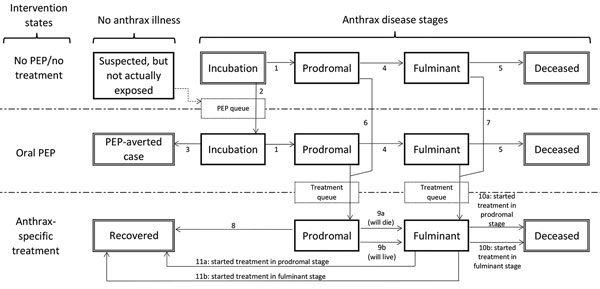Volume 23, Number 1—January 2017
Research
Modeling Tool for Decision Support during Early Days of an Anthrax Event
Figure 1

Figure 1. Anthrax Assist model disease stages, intervention states, and transitions. Persons begin in the top Incubation state and may transition via the numbered arrows from one state to another until they eventually reach an outcome state (doubled-walled boxes). All persons with untreated infection will progress to deceased. Recovery is possible only through effective oral PEP (averted case) or anthrax-specific treatment (recovered). Transitions are governed by the 3 Anthrax Assist models as follows: Epidemic-Curve model, transition 1; PEP Impact model, transitions 2 and 3; Healthcare Impact model, transitions 4–11. Suspected, but Not Actually Exposed cases are shown here because of their role in diluting the incubating population seeking PEP (dashed transition arrow). PEP and Treatment queues (dashed outline boxes) are depicted to reflect the necessary interactions persons must have with the public health and healthcare systems to transition between treatment states. PEP, postexposure prophylaxis.
1These senior authors contributed equally to this article.